
Advances in Geodesy and Geoinformation
Scope & Guideline
Transforming Data into Solutions for a Better World
Introduction
Aims and Scopes
- Geodesy and Geodynamics:
Research in this area includes studies on Earth rotation, reference frames, and geodetic networks, highlighting the importance of precise measurements and modeling of terrestrial phenomena. - Environmental Monitoring and Mapping:
This scope involves the use of satellite imagery and remote sensing data to assess environmental changes, land use, and resource management, showcasing the application of geoinformatics in environmental science. - Global Navigation Satellite Systems (GNSS) Applications:
The journal covers advancements in GNSS technologies, positioning techniques, and their applications across various fields, including agriculture, construction, and urban planning. - Data Integration and Methodological Innovations:
Research on integrating different data sources and methodologies, such as UAV photogrammetry and TLS, reflects the journal's emphasis on innovative approaches to geospatial data processing and analysis. - Spatial Analysis and Geostatistics:
The application of spatial statistical methods and models for analyzing geospatial data trends, such as seismicity and land use patterns, is a core area of focus.
Trending and Emerging
- Remote Sensing and Environmental Analysis:
Recent publications emphasize the use of remote sensing technologies, such as Sentinel-1 and Sentinel-2, for environmental monitoring and land use change detection, showcasing the significance of these tools in contemporary geospatial research. - Advancements in UAV and TLS Technologies:
The integration of UAV (Unmanned Aerial Vehicle) and TLS (Terrestrial Laser Scanning) data for various applications is on the rise, highlighting innovative methodologies for capturing and analyzing spatial data. - Precision Agriculture and GNSS Innovations:
The application of GNSS technologies in agriculture has gained traction, focusing on enhancing positioning accuracy and monitoring agricultural practices, which is crucial for sustainable development. - Data Visualization and Geoinformatics:
There is a notable trend towards improving data visualization techniques, particularly using advanced programming tools like GMT and R, to enhance the interpretability and usability of geospatial data. - Geospatial Data Integration for Urban Management:
Emerging themes in the integration of geospatial data for urban planning and infrastructure management reflect the growing importance of data-driven decision-making in city development.
Declining or Waning
- Traditional Cartography Techniques:
As digital mapping and geoinformatics gain prominence, traditional cartographic approaches have become less frequently discussed in the journal, indicating a shift towards more advanced and computational methods. - Basic Geodesic Theory:
Theoretical discussions surrounding basic geodesic principles have waned, with more emphasis now placed on practical applications and technological advancements. - Land Acquisition Strategies:
Research specifically focused on land acquisition methods has decreased, suggesting a move towards broader discussions on land use and management rather than procedural methodologies.
Similar Journals

Revista de Teledeteccion
Advancing remote sensing for a sustainable future.Revista de Teledeteccion, published by UNIV POLITECNICA VALENCIA, EDITORIAL UPV, is a leading Open Access journal dedicated to the interdisciplinary field of remote sensing and its applications. Since its inception in 2010, this journal has provided a vital platform for researchers, professionals, and students to disseminate groundbreaking findings, foster collaboration, and engage with contemporary challenges in Earth and Planetary Sciences as well as Geography, Planning, and Development. With a Q3 ranking in both fields as of 2023, it serves as an essential resource for advancing knowledge and innovative practices in hi-tech remote sensing methodologies. The journal covers a broad spectrum of topics, from satellite imaging techniques to environmental monitoring, making it an invaluable asset for those interested in harnessing remote sensing technologies to address real-world issues. The editorial office is located in Valencia, Spain, and the journal aims to bridge the gap between theoretical research and practical application, enriching the scientific community's understanding and capabilities in this dynamic domain.
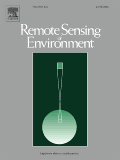
REMOTE SENSING OF ENVIRONMENT
Illuminating Environmental Dynamics with Precision.REMOTE SENSING OF ENVIRONMENT, published by Elsevier Science Inc, is a premier academic journal specializing in the interdisciplinary field of earth observation and remote sensing technologies. With an impressive impact factor and classified in the Q1 category for Computer Science in Earth Sciences, Geology, and Soil Science as of 2023, this journal serves as a vital resource for researchers, professionals, and students alike. The journal, which has been disseminating high-quality research since its inception in 1969, provides a platform for the exploration of innovative methodologies and applications in the assessment of environmental changes and resource management through advanced imaging techniques. While not an open-access journal, REMOTE SENSING OF ENVIRONMENT offers access options that make cutting-edge research accessible to its audience. Its strategic focus on critical issues pertaining to environmental monitoring and sustainable practices underscores its role in enhancing our understanding of the planet’s dynamics.
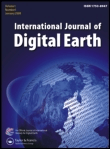
International Journal of Digital Earth
Connecting disciplines for a sustainable digital Earth.Welcome to the International Journal of Digital Earth, a premier open-access journal published by Taylor & Francis Ltd, dedicated to advancing the field of digital geoscience. With its ISSN 1753-8947 and E-ISSN 1753-8955, this journal has established itself as a vital resource for scholars and practitioners alike since its inception in 2008. The journal is at the forefront of interdisciplinary research, showcasing a diverse scope from Earth sciences to computer science applications, evidenced by its impressive ranking in the 2023 Scopus database. It holds a Q1 categorization in Earth and Planetary Sciences, with a percentile rank among the top 16% of its peers, and also stands out in the Q2 quartile for both Computer Science Applications and Software disciplines. The journal's commitment to open access, established in 2022, underscores its dedication to disseminating knowledge and fostering collaboration. By providing a platform for high-quality research, the International Journal of Digital Earth plays a critical role in addressing the complexities of our changing planet through innovative digital solutions. Whether you are an experienced researcher or a student, this journal is an essential addition to your academic toolkit.

Geographia Technica
Unveiling New Perspectives in Geography and Earth SciencesGeographia Technica is an esteemed academic journal published by GEOGRAPHIA TECHNICA ASSOCIATION - GT Assoc in Romania, serving as a vital platform for the dissemination of cutting-edge research in the interdisciplinary fields of geography, planning, and earth sciences. Since its inception in 2009 and continuing through to 2024, the journal has established itself as a respected source of knowledge, reflected in its classification within the Q3 category across significant fields such as Computers in Earth Sciences, Earth-Surface Processes, and Geography, Planning and Development. With the ambition to enhance the understanding of socio-environmental interactions and technological applications in these areas, Geographia Technica invites scholars and practitioners to contribute original research that pushes the boundaries of current knowledge. Although currently not listed as open access, the journal's engaging content ensures it remains a valuable resource for researchers, professionals, and students keen on advancing their expertise in these dynamic disciplines.
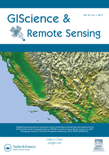
GIScience & Remote Sensing
Connecting Global Researchers through Open AccessGIScience & Remote Sensing, published by Taylor & Francis Ltd, stands as a leading journal in the realm of Earth and Planetary Sciences, holding a prestigious Q1 ranking. Since its transition to Open Access in 2022, the journal has significantly broadened its reach, enabling researchers, professionals, and students across the globe to disseminate and access cutting-edge research related to geographic information science and remote sensing technologies. With a focus on publishing high-quality, peer-reviewed articles that contribute to the understanding of the Earth’s processes, environments, and interactions, this journal not only supports advancements in scientific knowledge but also fosters interdisciplinary collaboration. Based in the United Kingdom, GIScience & Remote Sensing continues to pave the way for innovative methodologies and applications, solidifying its vital role within the scientific community.
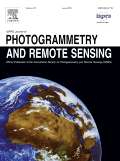
ISPRS JOURNAL OF PHOTOGRAMMETRY AND REMOTE SENSING
Transforming Data into Knowledge in Geospatial SciencesISPRS Journal of Photogrammetry and Remote Sensing is a prestigious publication at the forefront of the fields of photogrammetry and remote sensing. Established in 1989 and published by Elsevier, this journal has consistently maintained a strong academic standing, currently holding a top-tier Q1 ranking across multiple categories, including Atomic and Molecular Physics, Computer Science Applications, and Engineering. This reflects its vital contribution to advancing knowledge and technology in these dynamic fields. The journal is not only a vital resource for researchers and professionals but also serves as an essential academic platform for students keen on delving into the latest developments in geospatial sciences. The journal operates under a non-open access model, ensuring that submitted research adheres to the highest standards of scholarly communication and integrity. With an impactful focus, it brings innovative research, comprehensive reviews, and significant case studies to a global audience. The ISPRS Journal is crucial for those aiming to enhance their understanding and application of remote sensing techniques within various scientific disciplines.

Boletim de Ciencias Geodesicas
Innovating the Future of Earth and Planetary SciencesBoletim de Ciências Geodésicas is an esteemed academic journal published by the Universidade Federal do Paraná within its Centro Politécnico. Focused on the dynamic field of Earth and Planetary Sciences, this Open Access journal has been a pivotal resource since 1997, fostering the dissemination of critical research and innovative methodologies. With an impact factor indicative of its relevance in the discipline, Boletim de Ciências Geodésicas ranks in the Q3 quartile for Earth and Planetary Sciences as of 2023, showcasing its commitment to quality scholarship in a competitive field. Researchers and students alike will benefit from access to cutting-edge findings, given its broad scope that encompasses various aspects of geodesy and related sciences. The journal's convergence of research from 2005 to 2024 ensures that it remains at the forefront of emerging trends and fundamental developments in the discipline, further enhancing its esteemed reputation in the academic community.

Geo-Spatial Information Science
Exploring the Intersection of Geography and TechnologyGeo-Spatial Information Science, published by TAYLOR & FRANCIS LTD, is a premier open-access journal that has been at the forefront of disseminating cutting-edge research since its inception in 1998. With an ISSN of 1009-5020 and an E-ISSN of 1993-5153, this journal plays a pivotal role in the fields of Computers in Earth Sciences and Geography, Planning and Development, achieving a prestigious Q1 ranking in both categories as of 2023. Its exemplary Scopus rankings highlight its relevance within the social sciences and earth sciences, placing it among the top echelons of its field, with a 95th and 93rd percentile respectively. The journal aims to bridge the gap between innovative geospatial technologies and their applications in real-world scenarios, fostering interdisciplinary collaboration and advancing the global understanding of spatial data analysis. Based in the United Kingdom, Geo-Spatial Information Science invites researchers, professionals, and students to contribute and access research that shapes the future of geo-spatial sciences, all while adhering to open access principles that ensure broad dissemination and engagement with the broader academic community.

JOURNAL OF GEODESY
Pioneering Insights into Earth’s DynamicsJOURNAL OF GEODESY, published by SPRINGER, is a premier academic journal dedicated to advancing the field of geodesy and its related disciplines. With an impact factor reflecting its high citation rate and rigorous peer-review process, this journal occupies a distinguished place in the academic community, categorized within the Q1 quartiles for Computers in Earth Sciences, Geochemistry and Petrology, and Geophysics as of 2023. The journal addresses various critical topics affecting our understanding of Earth’s shape, gravity field, and rotational dynamics, thus providing vital insights for researchers, professionals, and students alike. Derived from a legacy that spans from 1995 to 2024, the journal continues to publish significant contributions that foster growth in Earth and planetary sciences, with rankings that place it within the top tier of its categories: 10th in Geophysics, 13th in Geochemistry and Petrology, and 9th in Computers in Earth Sciences, all reflecting percentile rankings above 88%. Although Open Access options are not currently available, the journal remains an essential resource for advancing geodetic research across the globe. Explore the latest findings and connect with leading experts in the field through this highly regarded platform.
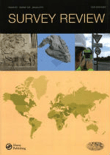
SURVEY REVIEW
Pioneering Scholarly Communication Since 1963SURVEY REVIEW is a distinguished journal published by Taylor & Francis Ltd, focusing on a diverse range of disciplines including Civil and Structural Engineering, Computers in Earth Sciences, and Earth and Planetary Sciences. With an ISSN of 0039-6265 and an E-ISSN of 1752-2706, this journal has been a vital resource for scholarly communication since its inception in 1963. Positioned within the Q2 and Q3 quartile categories according to the latest rankings, it is recognized for its significant contributions to advancing knowledge in multiple fields, specifically holding a rank of 64/159 in Earth and Planetary Sciences and 32/73 in Computers in Earth Sciences. Researchers, professionals, and students benefit from its critical insights into complex engineering and scientific challenges. Although SURVEY REVIEW is not open access, it remains a highly cited journal, making it an essential avenue for disseminating pivotal findings that impact both academia and industry practices.